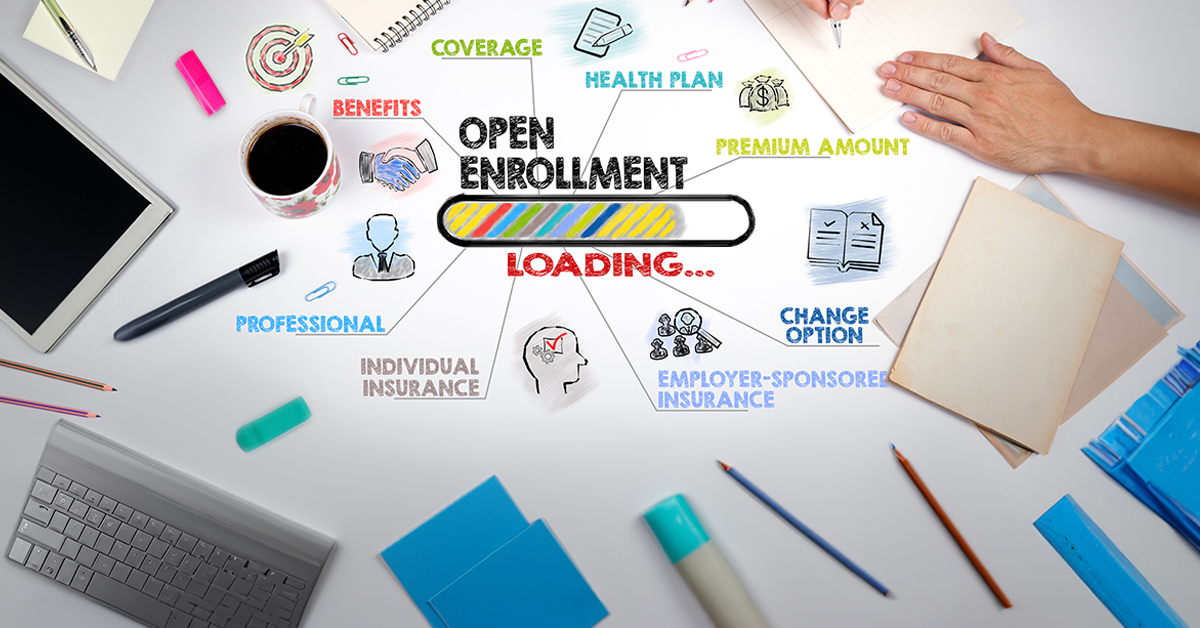As a general rule, every good communication has a call to action…something an employee needs to act on soon. And timing is important. There’s no sense telling them what they need to do if they can’t do it right then and there.
But as rules go, there are always exceptions. And communicating change is one of them.
Below we walk you through a three-phase approach to change communications. For other HR comms tips, check out our ebook: Communicate with Purpose.
Changes to Health Plans — A Big Deal to Employees
If you’re making big changes to benefit plans next year, start educating employees well ahead of decision day. Many people want time to talk with someone at home about the options. Often there’s math involved, and sometimes a search for providers in a new network.
You may be steeped daily in health care and benefits, but most employees only think about these things during Open Enrollment. It’s a big, complicated decision that requires specific change management communication.
Communicate Early, Revealing Details in Phases
To keep nerves calm and thwart panicked questions, start communicating early…and get more detailed with each phase.
Phase 1: 6 Weeks Before Open Enrollment: “Change Is Coming”
| Messaging — What to Say | Channels — How to Get the Word Out |
| Give general information: “Changes are coming. Be ready to dive in and learn more.” Tell them the “high-level why” of the changes. Let them know you’ll be telling them more in the coming weeks. And tell them when Open Enrollment starts…as does their decision-making. | Postcard mailed home Monitor slides |
Remember to educate leaders and managers before any all-employee communications. We have a “tool kit” that may help, plus you can download our template for “cascading” your messages.
Phase 2: 4 Weeks Before Open Enrollment: “Let’s Learn What’s Changing”
| Messaging — What to Say | Channels — How to Get the Word Out |
| Tell them how the new plans work, how the changes affect them. Don’t hide bad news — if costs are increasing or coverage is reducing, tell them up front. If they’ll have a new network, tell them how to see if their providers are in that network. Refer them somewhere to learn more (intranet, FAQ in breakrooms, etc.). | FAQ on intranet (or printed in common spaces) Email with FAQ attached Letter or designed mailer sent home Employee advocates/champions |
If you have remote or frontline workers, use channels that reach them where they tend to be. This blog has tips on how to reach dispersed employees.
Phase 3: 2 Weeks Before Open Enrollment: “Are You Ready to Decide?”
| Messaging — What to Say | Channels — How to Get the Word Out |
| Remind them when Open Enrollment starts and ends. If there’s a pre-enrollment informational site from your carrier, promote it. Refer them again to the FAQ, especially if you can say you’ve updated it. Release your Open Enrollment materials — benefits guide, newsletter, summaries, or at-a-glance’s, etc. | Posters at all locations — in restrooms and breakrooms, on entrance and exit doors — with a QR code to the FAQ or other resource Email with FAQ attached Recorded (or live) webinar showing how the plans work and how to enroll |
Phase 4: During Open Enrollment: “Time to Choose”
| Messaging — What to Say | Channels — How to Get the Word Out |
| Make a big splash on opening day (“Your decision-making starts today!” “Choose your best benefits now!”) Be clear on what they need to do — enrollment instructions, decision-making tips/tools, deadlines, documents to have on hand, etc. Spread out a few communications over the enrollment period: 1) it’s here, 2) don’t wait too long, 3) one week to go, 4) last chance. | Posters with QR codes to the enrollment site and/or posted benefits guide Announcements on speakers in warehouses and in stores Emails with links to all resources Table tents in breakrooms, with QR codes Think outside your HR box and reach employees where they are |
Change management communication helps educate employees early to prepare them for what’s changing. So they’ll have time to learn, share with their family, and be ready to make smart decisions. That probably means fewer calls to HR, too.
Follow us on LinkedIn for more insight, advice, communication samples, and more.



